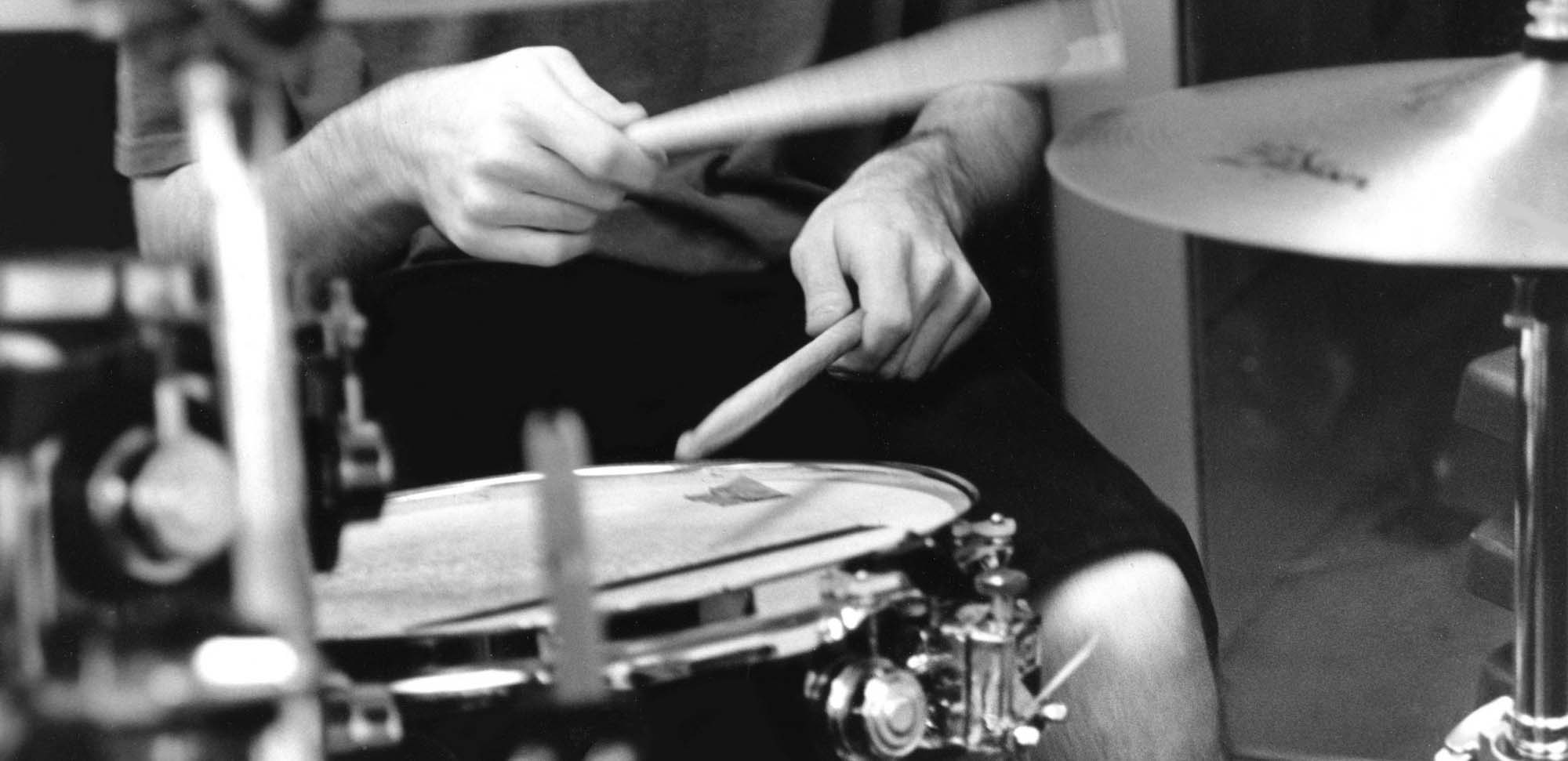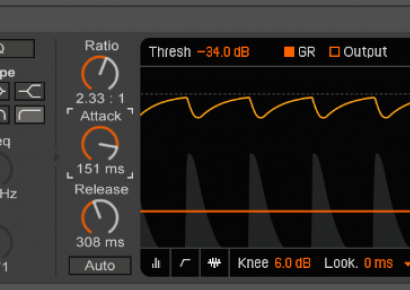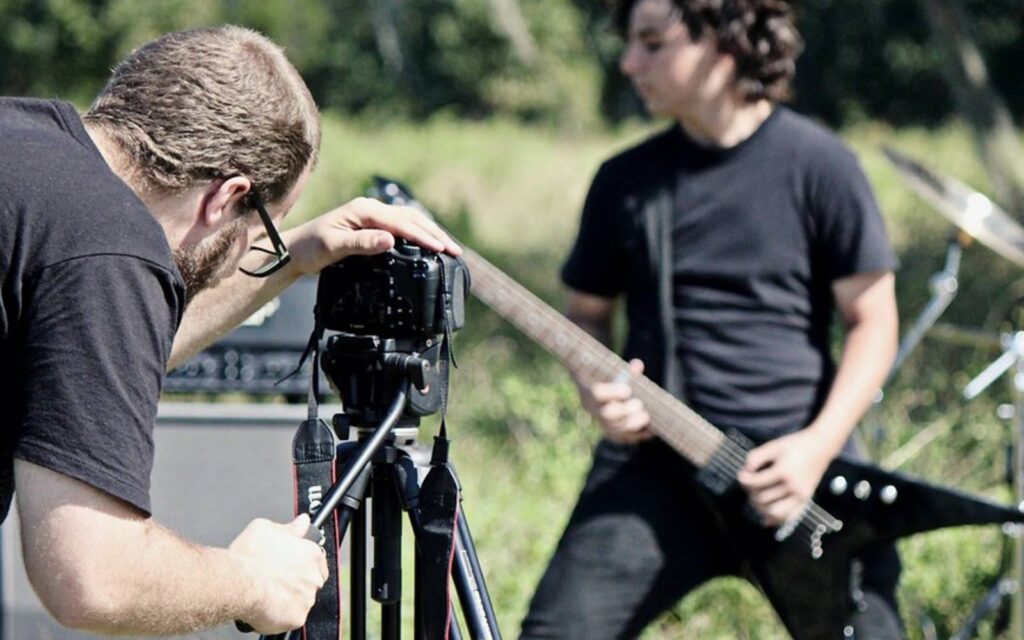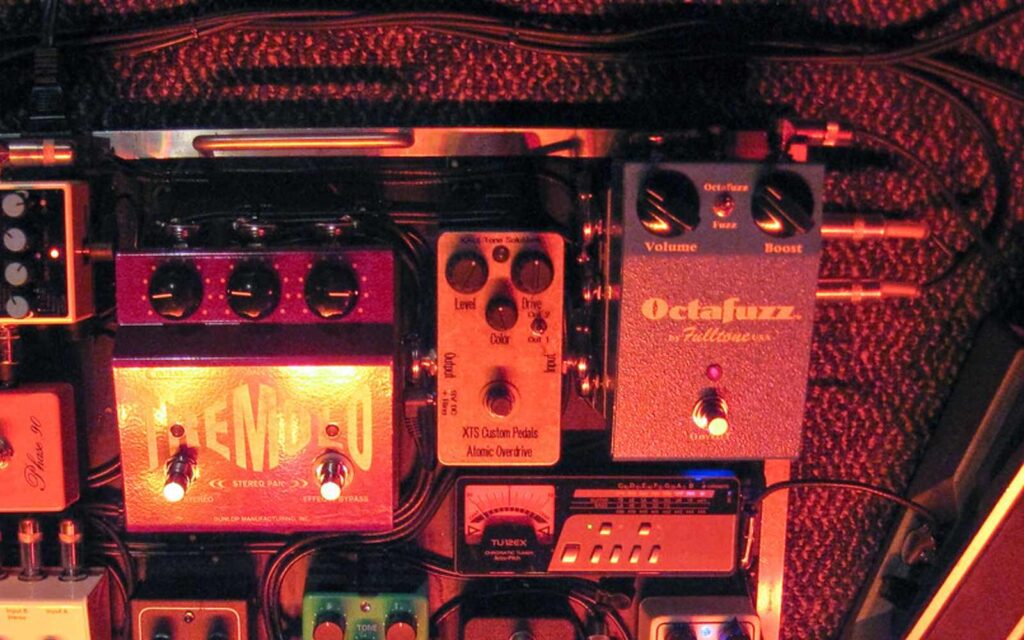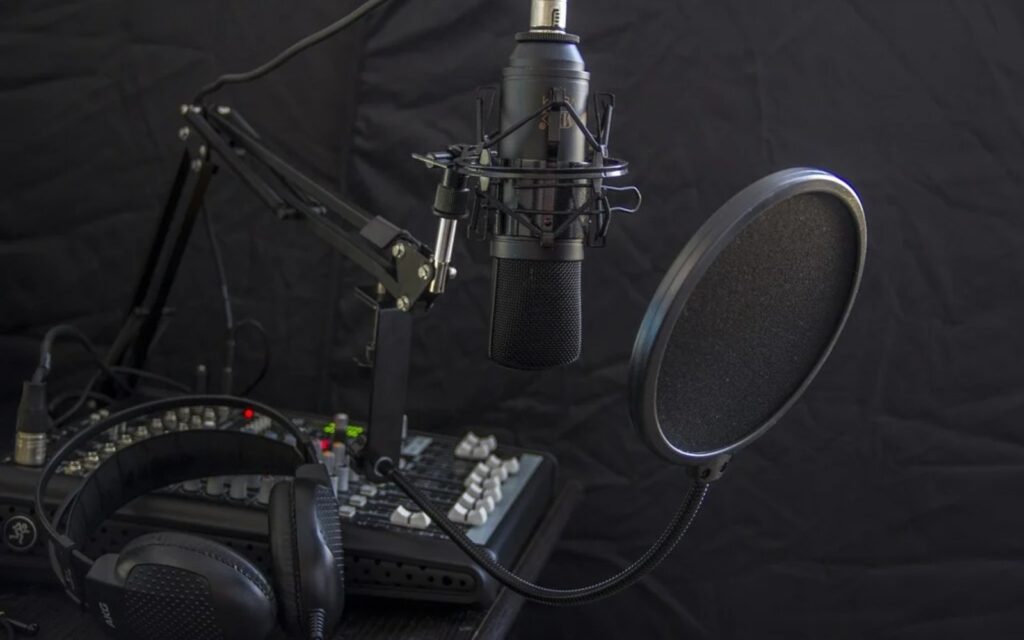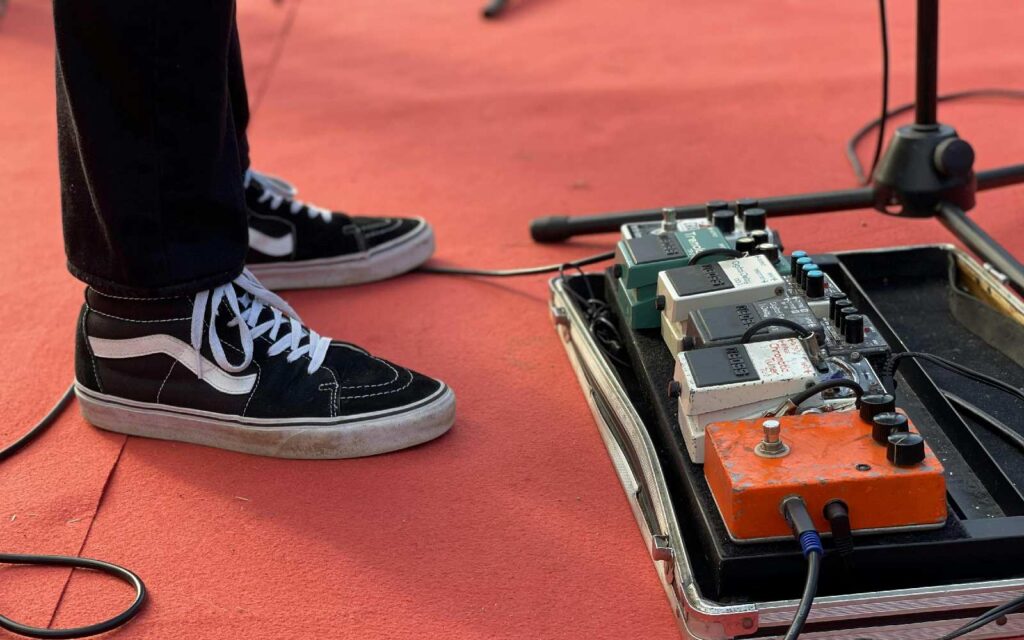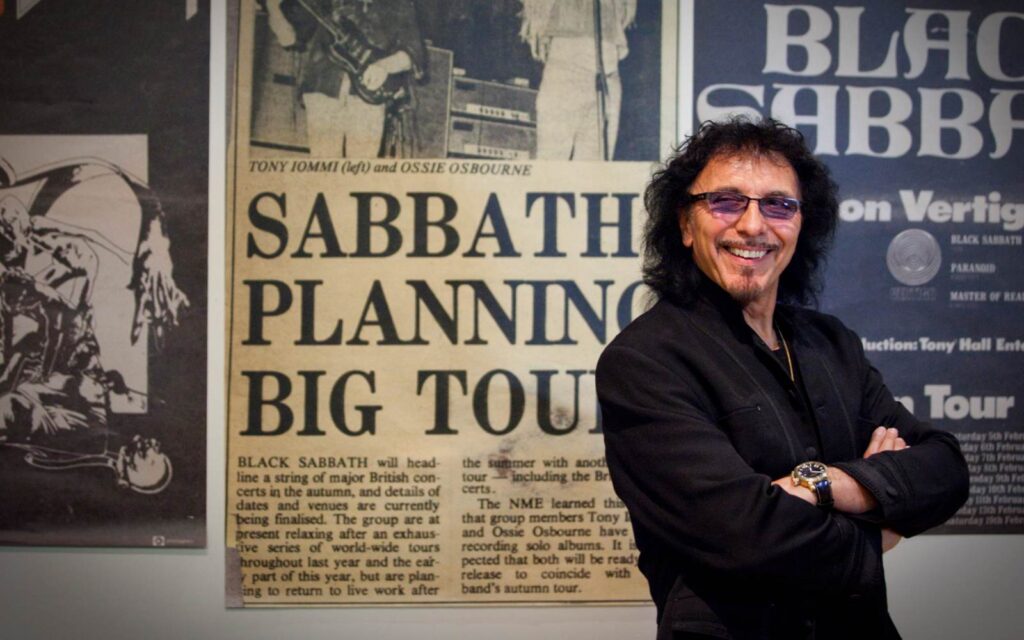
GETTING DOWN
Our basic sticking for this concept is fairly straightforward – FIG A. It does feature some dynamic variation however, through the use of accents and ghost notes (unaccented notes played softly), which can add a degree of difficulty. Even without the accents though, the lick will still sound cool and is worth checking out. Figure A shows the lick in a bar of 2/4, written in eighth note triplets and using the six-note sticking – RLRLLF (foot). You can see that the two right hand strokes are accented and the left hand is the opposite and not at all – purely filling in the gaps. The bass drum too, is supposed to be played as a balanced part of the lick. You have to make it blend with the hands as opposed to slamming it too loudly. You can see at Figure B that you can fit two cycles of the fill in a measure of 4/4.
FINDING THE GROOVE
At this point, it needs to be mentioned that how your fill is played is very dependent of the tempo of the song/situation. For example, if you’re playing a tune that is a relatively moderate tempo, eighth note triplets will be quite slow, may feel awkward to play and even become less exciting than you’d planned – we can’t have that! In this case playing the fill at double time/speed would be more appropriate. Figure C shows the lick as played over 16th note triplets, allowing you to fit four cycles in a bar of 4/4. At this point, you would practice playing some time/groove and being able to smoothly move into the fill for a whole bar and then back to groove with a crash on beat one. Just be mindful of the fact that you’ll need to add another bass drum for the crash cymbal, so you’ll actually end up with two bass drum strokes at this point.
MOVE ON UP
If you’re beginning to feel confident, you can start to orchestrate the lick around the drums a little more. Figure D is great way to start by simply moving the two right hand accents onto the toms. This will give you a vibe of how the lick can work in a musical setting and also how easy it is to start thinking melodically rather then methodically. Another interesting sound comes from splitting up the accents across two sounds (FIG G). In this example, I’ve moved from the snare to a tom but you could also play it the opposite way or mix and match as you Up until this point, you may have noticed that the left hand has remained stationary on the snare drum playing the softer ghost notes. The next two figures really just continue orchestration ideas but allow the left hand to move from the snare drum to other parts of the kit (FIG F and G). Figure F shows the lick with the left hand on the rack tom whereas Figure G shows the left hand on the hi-hat. This is actually one of my favourite applications of this lick because the hi-hat gives such a contrast in sound compared to the toms. I use this concept a lot.
IN CONTEXT
Something else to think about is whether you’d actually want to use the lick for a whole bar. Most of the time, a smaller twobeat fill is more appropriate than a full bar. This would be easy enough to do by only playing two cycles of the lick on beats 3 and 4 of the fill bar. Figures H and J show another scenario of using the lick on beats 1 and 2 of the bar followed by another phrase or more generic idea on beats 3 and 4. You could also interpret this by playing two beats of the lick and two beats of your own improvised fill, which is a great way to start incorporating this concept into your playing.
